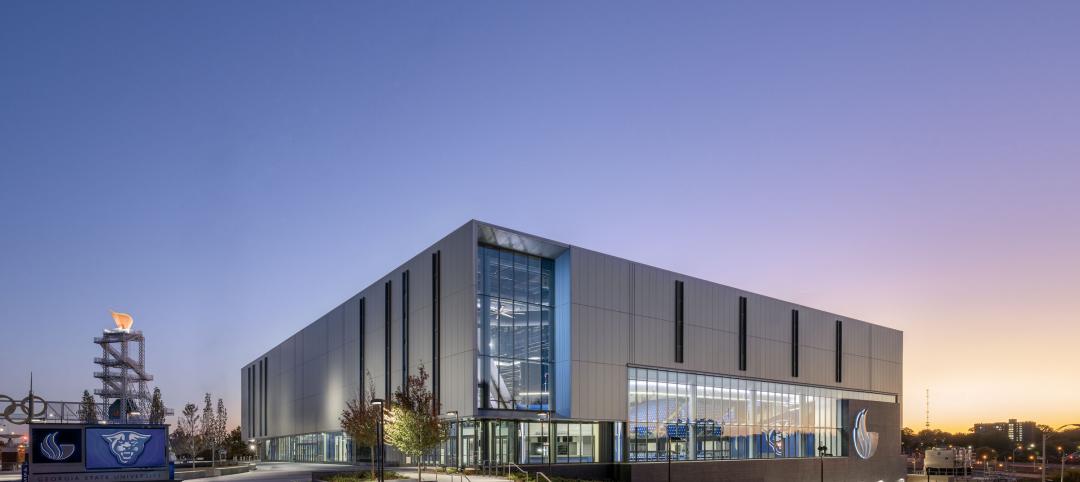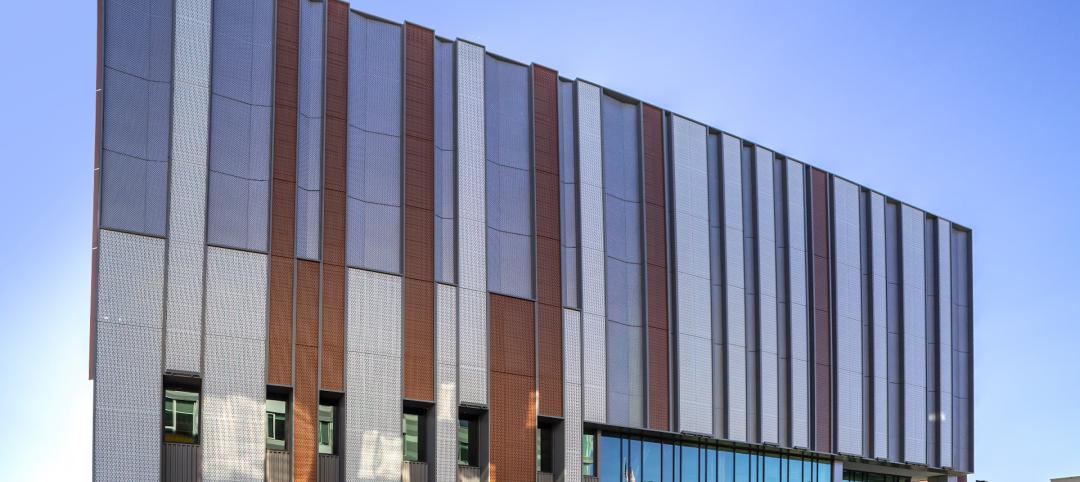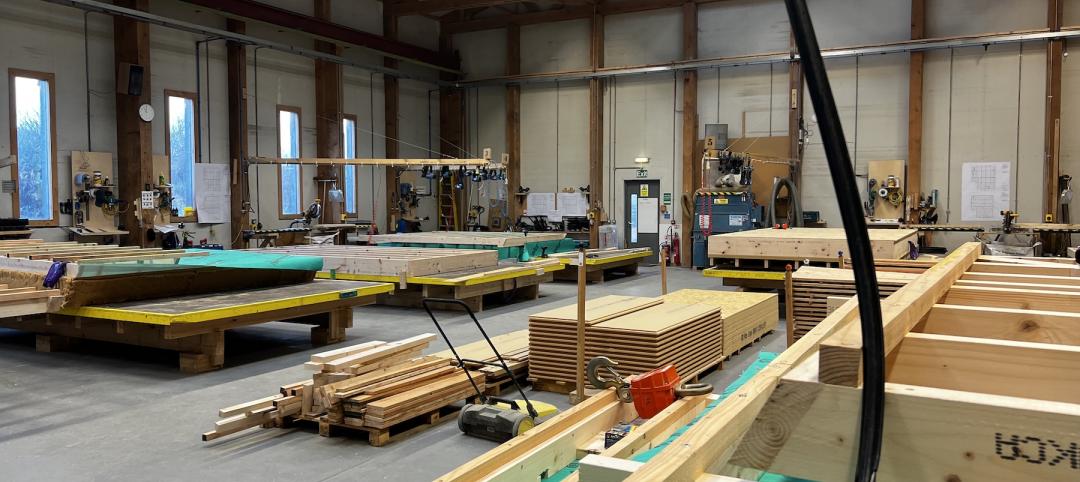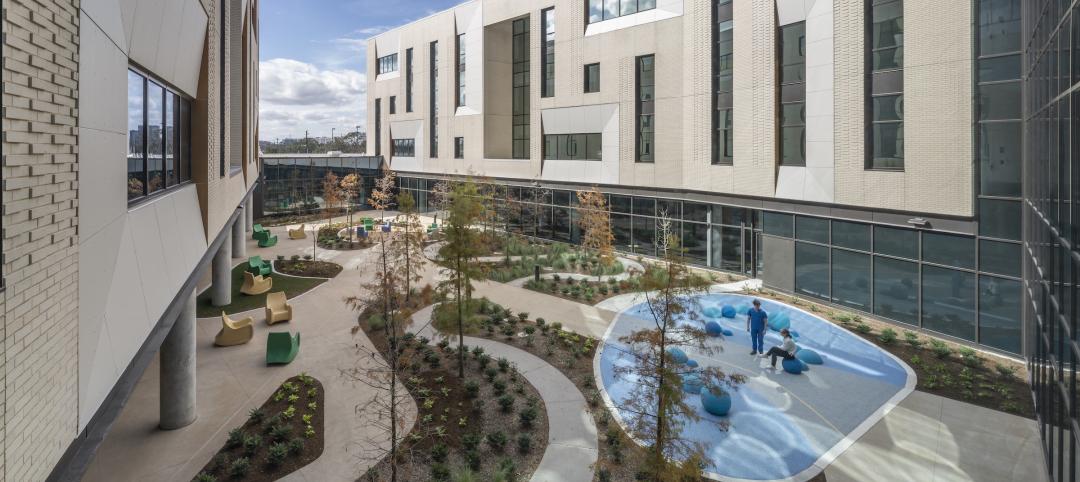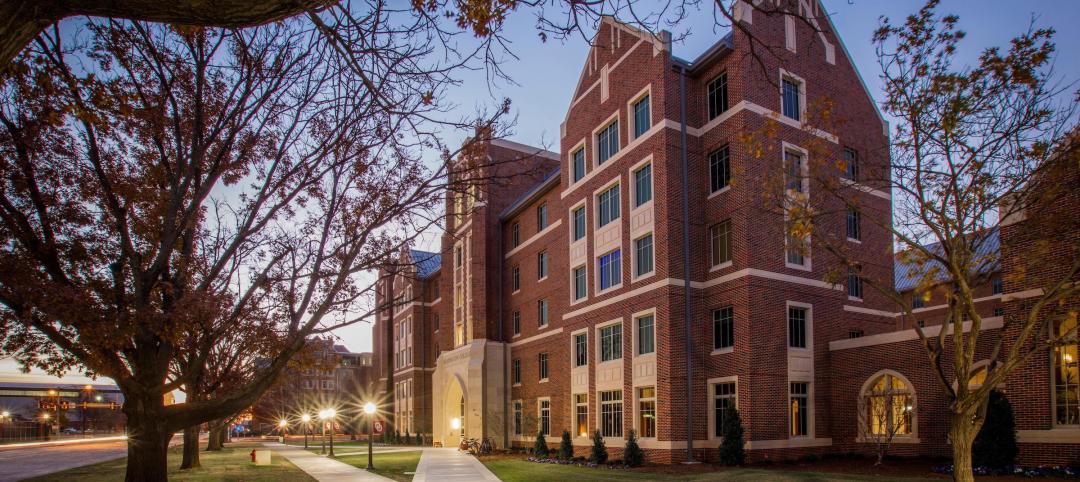 |
|
Workers inspect a rooftop PV installation. Improper handling, storage, or installation of the PV panels can cause damage to the roof. |
The popularity of rooftop photovoltaic (PV) panels has exploded during the past decade as Building Teams look to maximize building energy efficiency, implement renewable energy measures, and achieve green building certification for their projects.
However, installing rooftop PV systems—rack-mounted, roof-bearing, or fully integrated systems—requires careful consideration to avoid damaging the roof system. Improper handling, storage, or installation of the PV panels can cause damage to the roof, which can lead to moisture intrusion, wind uplift problems, and even structural damage. In addition, rooftop PV systems should be designed with future maintenance, roof repairs, and fire-suppression efforts in mind.
BD+C asked a pair of top-notch roofing experts to identify the most critical design, construction, and installation considerations. They offer the following tips:
 |
|
Photovoltaic arrays should be confi gured to allow access for future maintenance, roof repairs, and fire-suppression efforts. |
1. Verify the fire rating of your rooftop photovoltaic system.Most rooftop PV systems qualify for a Class C fire rating, while most of the roof coverings over which these systems are installed are fire rated Class A or B, says Philip D. Dregger, PE, RRC, principal with roof and waterproofing consultant Technical Roof Services Inc., Concord, Calif.
Dregger says the fire rating, especially spread of flame, is critical, especially for roof-bearing and rack-mounted systems. For instance, Building Teams may need to take steps like incorporating half-inch gypsum board into the assembly to obtain the proper fire rating.
For sloped roofs, Dregger says it is especially important to confirm that the required fire classification is available at the slope required. “For instance, standing-seam metal roofs routinely qualify as Class A fire-resistant on unlimited slopes, whereas the same standing-seam metal roofs covered with thin-film, flexible PV panels have significant slope restrictions,” he says.
2. Flashing detail is critical for maintaining the warranty. Flashing detail work must be performed by a contractor approved by the roof membrane manufacturer, says Mike Ennis, technical director of the Single Ply Roofing Industry (SPRI), Waltham, Mass., which recently convened a task force to identify key rooftop PV installation issues. “It's not so much a difference in the details as it is that the details are properly completed,” says Ennis.
Building owners must get such permission in advance from the roofing manufacturer or the warranty may be voided. The main concern, says Ennis, is keeping a record of alterations to the roof system. “For example, if a manufacturer gets a leak call immediately after an alternation is completed, they know where to start looking for the leak,” he says.
3. PV systems must be properly marked. Marking is needed to provide emergency responders with appropriate warning and guidance with respect to working around and isolating the solar electric system. Proper marking helps responders identify energized electrical lines that connect the solar modules to the inverter, according to the California Department of Forestry and Fire Protection's (CDFFP) Solar Photovoltaic Installation Guideline (www.osfm.fire.ca.gov/pdf/reports/solarphotovoltaicguideline.pdf).
Materials used for marking must be weather resistant and should be placed adjacent to the main service disconnect in a location clearly visible from the location where the lever is operated.
4. Make sure to protect the roof system while handling PV panels. Damage to roof systems, especially single-ply membranes, often occurs during the handling of the PV panels. SPRI's Ennis offers four tips for avoiding roof system damage while moving and storing PVs:
-
Store boxed PV units over joists to avoid deflecting the metal deck.
-
If boxed units are palletized, place a cushion layer of plywood between the pallet and the roof surface.
-
Do not point-load the roof surface by placing the corner of a hard panel directly on the surface.
-
Use moving equipment fitted with pneumatic tires to transport equipment and materials over the finished roof surface.
5. In retrofit projects, consider roof life before installing PVs. Due to potentially high costs associated with temporarily disconnecting and moving PV panels to execute roof repairs, Building Teams should assess the remaining life of the existing roof covering as part of a PV project, says Dregger.
He says serious consideration should be given to replacing the existing roof covering as part of a PV project. At the very least, says Dregger, you should investigate and repair roof leaks and perform any preventive maintenance work, even if it is not scheduled to be performed for a couple of years.
6. Pay close attention to the location of direct current (DC) conductors. Conduit, wiring systems, and raceways for photovoltaic circuits should be located as close as possible to the ridge or hip or valley and from the hip or valley as directly as possible to an outside wall to reduce trip hazards and maximize ventilation opportunities, according to the CDFFP's installation guidelines.
DC combiner boxes should be located such that conduit runs are minimized in the pathways between arrays. To limit the hazard of cutting live conduit in venting operations, DC wiring should be run in metallic conduit or raceways when located within enclosed spaces in a building and should be run (to the maximum extent possible) along the bottom of load-bearing members.
7. Provide for fall protection in certain cases. In retrofit projects, if the PV modules direct foot traffic to within six feet of unprotected roof edges or roof openings, fall protection provisions, such as guardrails and roof hatches, are a must, says Dregger.
8. Configure PV arrays to allow access for future maintenance, roof repairs, and fire-suppression efforts. CDFFP's installation guidelines recommend a minimum of six feet of clearance along the perimeter of the roof and at least four feet around roof access hatches and skylights. Also, pathways should be provided along the centerline of both axes of the roof. Locate these pathways over structural members.
9. Make sure integrated PV panels can handle high winds. For semi-rigid PV panels adhered over mechanically attached single-ply roofs, make sure that the PV panels can accommodate billowing of the singly-ply membrane during high-wind conditions without incurring damage, such as cracking, splitting, or rupture. Dregger recommends installing air retarders and supplemental membrane fasteners around each PV panel to help avoid damage.
Related Stories
Sports and Recreational Facilities | Mar 15, 2023
Georgia State University Convocation Center revitalizes long-neglected Atlanta neighborhood
Georgia State University’s new Convocation Center doubles the arena it replaces and is expected to give a shot in the arm to a long-neglected Atlanta neighborhood. The new 200,000 sf multi-use venue in the Summerhill area of Atlanta is the new home for the university’s men’s and women’s basketball teams and will also be used for large-scale academic and community events.
Sponsored | Cladding and Facade Systems | Mar 15, 2023
Metal cladding trends and innovations
Metal cladding is on a growth trajectory globally. This is reflected in rising demand for rainscreen cladding and architectural metal coatings. This course covers the latest trends and innovations in the metal cladding market.
Building Tech | Mar 14, 2023
Reaping the benefits of offsite construction, with ICC's Ryan Colker
Ryan Colker, VP of Innovation at the International Code Council, discusses how municipal regulations and inspections are keeping up with the expansion of off-site manufacturing for commercial construction. Colker speaks with BD+C's John Caulfield.
Multifamily Housing | Mar 14, 2023
Multifamily housing rent rates remain flat in February 2023
Multifamily housing asking rents remained the same for a second straight month in February 2023, at a national average rate of $1,702, according to the new National Multifamily Report from Yardi Matrix. As the economy continues to adjust in the post-pandemic period, year-over-year growth continued its ongoing decline.
Healthcare Facilities | Mar 13, 2023
Next-gen behavioral health facilities use design innovation as part of the treatment
An exponential increase in mental illness incidences triggers new behavioral health facilities whose design is part of the treatment.
Student Housing | Mar 13, 2023
University of Oklahoma, Missouri S&T add storm-safe spaces in student housing buildings for tornado protection
More universities are incorporating reinforced rooms in student housing designs to provide an extra layer of protection for students. Storm shelters have been included in recent KWK Architects-designed university projects in the Great Plains where there is a high incidence of tornadoes. Projects include Headington and Dunham Residential Colleges at the University of Oklahoma and the University Commons residential complex at Missouri S&T.
Mixed-Use | Mar 11, 2023
Austin mixed-use development will provide two million sf of office, retail, and residential space
In Austin, Texas, the seven-building East Riverside Gateway complex will provide a mixed-use community next to the city’s planned Blue Line light rail, which will connect the Austin Bergstrom International Airport with downtown Austin. Planned and designed by Steinberg Hart, the development will include over 2 million sf of office, retail, and residential space, as well as amenities, such as a large park, that are intended to draw tech workers and young families.
Performing Arts Centers | Mar 9, 2023
Two performing arts centers expand New York’s cultural cachet
A performing arts center under construction and the adaptive reuse for another center emphasize flexibility.
Architects | Mar 9, 2023
HLW achieves Just 2.0 label for equity and social justice
Global architecture, design, and planning firm HLW has achieved The International Living Future Institute’s (ILFI) Just 2.0 Label. The label was developed for organizations to evaluate themselves through a social justice and equity lens.
Architects | Mar 8, 2023
Is Zoom zapping your zip? Here are two strategies to help creative teams do their best work
Collaborating virtually requires a person to filter out the periphery of their field of vision and focus on the glow of the screen. Zoom fatigue is a well-documented result of our over-reliance on one method of communication to work. We need time for focus work but working in isolation limits creative outcomes and innovations that come from in-person collaboration, write GBBN's Eric Puryear, AIA, and Mandy Woltjer.


